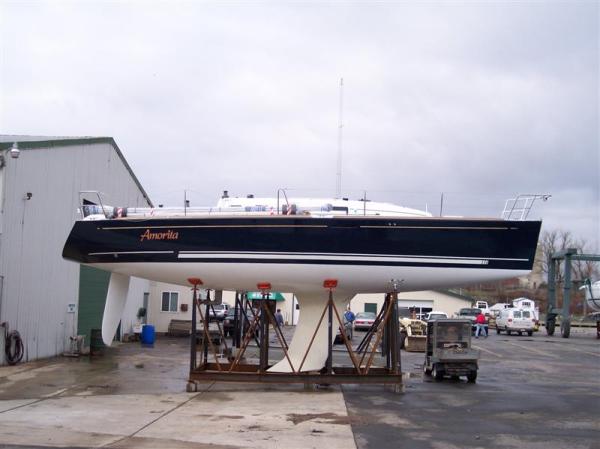Rick R.
Contributing Partner
http://www.sailfeed.com/2014/05/cheeki-rafiki-hull-found-search-suspended/
I hope our keel never falls off!
I hope our keel never falls off!
All EYO members and followers are welcome to join the fun and get to know the people you've met online!
See the link below for login credentials and join us!
(dismiss this notice by hitting 'X', upper right)
Not to take away from the loss, or the tragedy of the event, and the loss of 4 lives.
We may never know exactly what happened to the boat. If we allow ourselves the luxery of guessing from the available data including the photos of the hull, it seems to be a safe guess that the keel fell off.
This is the same issue that killed Mike Plant.
When the water was coming into the boat, if we follow our reasoning backwards, it would have been good to establish if the keel was going to fall off, or seemed like it was loose. Inspection of the keel bolts for movement would have been good. (They may have I am not saying they did not). If we are to learn from this tragedy we could think and discuss what would we do if the keel was moving about on a boat that we were on.
Guy


Boat design is an act of comprimises. Unfortinately, it seems that the comprimise includes speed vs lives.http://www.ericsonyachts.org/infoexchange/images/smilies/mad.gif
It's also an issue of cost vs lives. Another post morteum I read suggested that it was indeed possible to attach these keels much better, spreading the load across much more of the boat, but the cost to do so would be prohibitive in mass market, mass produced boats.
It's also an issue of cost vs lives. Another post morteum I read suggested that it was indeed possible to attach these keels much better, spreading the load across much more of the boat, but the cost to do so would be prohibitive in mass market, mass produced boats.

I not mean to argue, and I may not understand the statement properly, but I believe that mass market/mass produced vessels are normally stronger-engineered than single purpose racing boats.
Like racing cars, the winning driver/helmsperson will have the lightest vessel that is just strong enough to clear the finish line... and not too much further.
